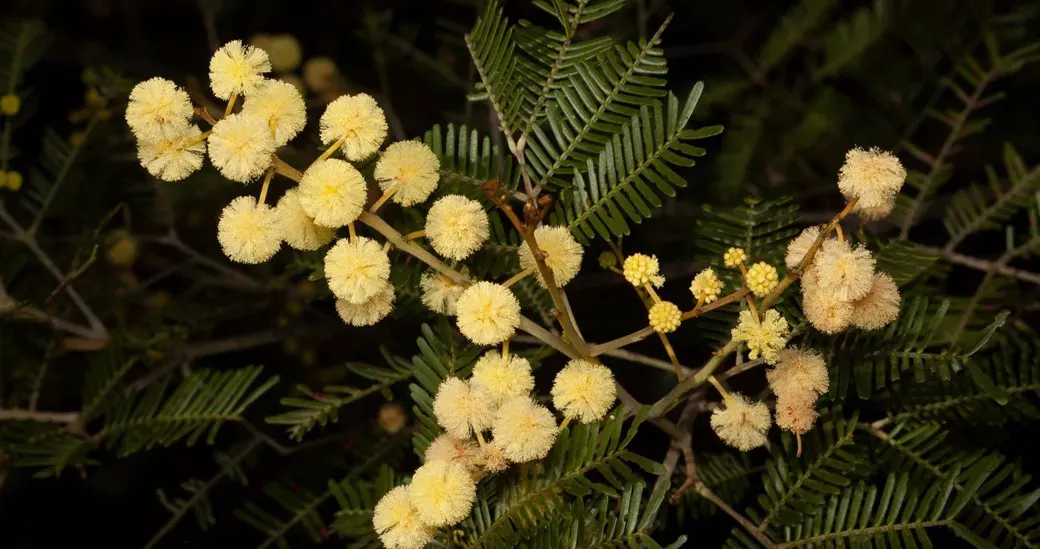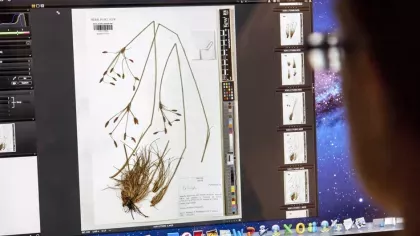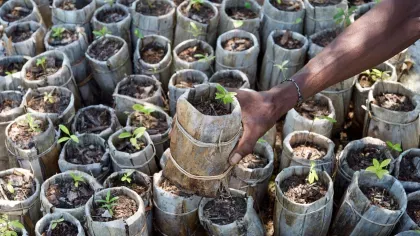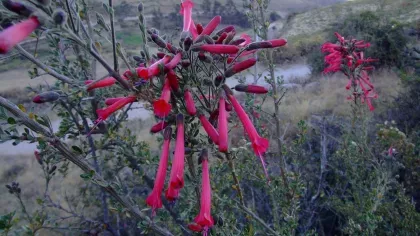23 November 2021
Can computers help protect plants from extinction?
Artificial Intelligence could be a useful tool for scientists assessing the extinction risk of plants.

Many of us think of robots and sci-fi films when we hear the term Artificial Intelligence (AI).
However, AI is essentially a computer replicating human decisions based on what a human has told it to do.
We’ve been harnessing the power of machine learning, a form of AI, in a novel way to predict which plants are threatened with extinction.
Plants are under threat
The extent to which a plant species is threatened is evaluated by conducting extinction risk assessments for The International Union for Conservation of Nature’s Red List of Threatened Species™ (IUCN Red List).
The IUCN Red List represents the world’s most comprehensive information source on the global conservation status of animal, fungi and plant species.
It is currently estimated that two in five plant species are threatened with extinction globally.
Kew’s Millennium Seed Bank Partnership (MSBP) is the world’s largest ex situ conservation programme and offers an ‘insurance policy’ against the extinction of wild plant species.
Working with our network of partners, seeds are continually collected and stored in our Millennium Seed Bank at Wakehurst, and in seedbanks around the world, to support the conservation of species, habitats and ecosystems, as well as for research.
We have always prioritised the most endangered, the most economically important and those that are endemic (native to one region or country).
Knowing the extinction risk of a species is, therefore, invaluable when prioritising our collection work.
Yet, despite global efforts to assess all plant species, we lack a published IUCN Red List Assessment for seven in eight plants.
Across the MSBP, only 8,647 species have a Red List Assessment - that's fewer than one in five species held in the collection.

Is there an alternative way to identify threatened species?
To predict how many and which species are threatened with extinction, we have been developing a process to create provisional assessments (essentially an assessment to identify if a species is threatened or not threatened), using machine learning.
Originally, we supply the computer with information about previously assessed species to ‘train’ the computer to identify when a species is threatened or not.
The computer then ‘learns’ to predict the extinction risk of unassessed species.
These predictions are only estimates. We measure the level of certainty of the prediction using statistics.
We can then improve the uncertain predictions by providing more relevant data by manually assessing more species, to ‘re-train’ the model.
This can reduce levels of uncertainty and improve the predictive capability of the model.
After an initial run of our model for all 47,659 species (as of March 2020) held in the MSBP, we identified 100 species with the least certain predictions.
High levels of uncertainty are typically a result of a lack of, or conflicting, online information about a particular species.
We manually researched and wrote IUCN Red List Assessments for these 100 species to aid in re-training of the model, by supplying manually verified data from these assessments.

Seed sampling success
One of the species with a highly uncertain prediction was an Australian shrub called Cangai Wattle (Acacia cangaiensis).
During the manual assessment, we identified it as being impacted by increased fire and drought intensity in Australia, and its assessed status is Endangered.
As a result of verifying its extinction risk status, the importance of seeds held at the Millennium Seed Bank and partner organisations has been recognised and we've identified potential uses for this species in post-fire restoration.
Once we have determined how many threatened species we conserve across the partnership using the model, we can identify whether the proportion of threatened species in our collections reflects the global proportion of threatened species.
A high proportion of threatened species conserved in the seed bank would be encouraging.
Ultimately, the model will be useful to provide a provisional threat status for plant species everywhere around the world, not just those held by the Millennium Seed Bank and partners.

So… will the machines replace humans?
There are restrictions to machine learning.
We (humans) can often make more informed, non-numerical, case-based decisions that computers cannot.
So, while machine learning is unlikely to ever replace the intricacy of a manual assessment, we can use the predictions from models as a provisional assessment to prioritise plant species for conservation efforts.
A human certainly could not make an informed assessment prediction for 47,659 species in a day.
References
Nic Lughadha, E., Bachman, S.P., Leão, T.C., et al. (2020) Extinction risk and threats to plants and fungi. Plants, People, Planet, 2: 389-408.
IUCN 2021. The IUCN Red List of Threatened Species. Version 2021-1.
Data sourced via Millennium Seed Bank Partnership Data Warehouse 2020-2021.



